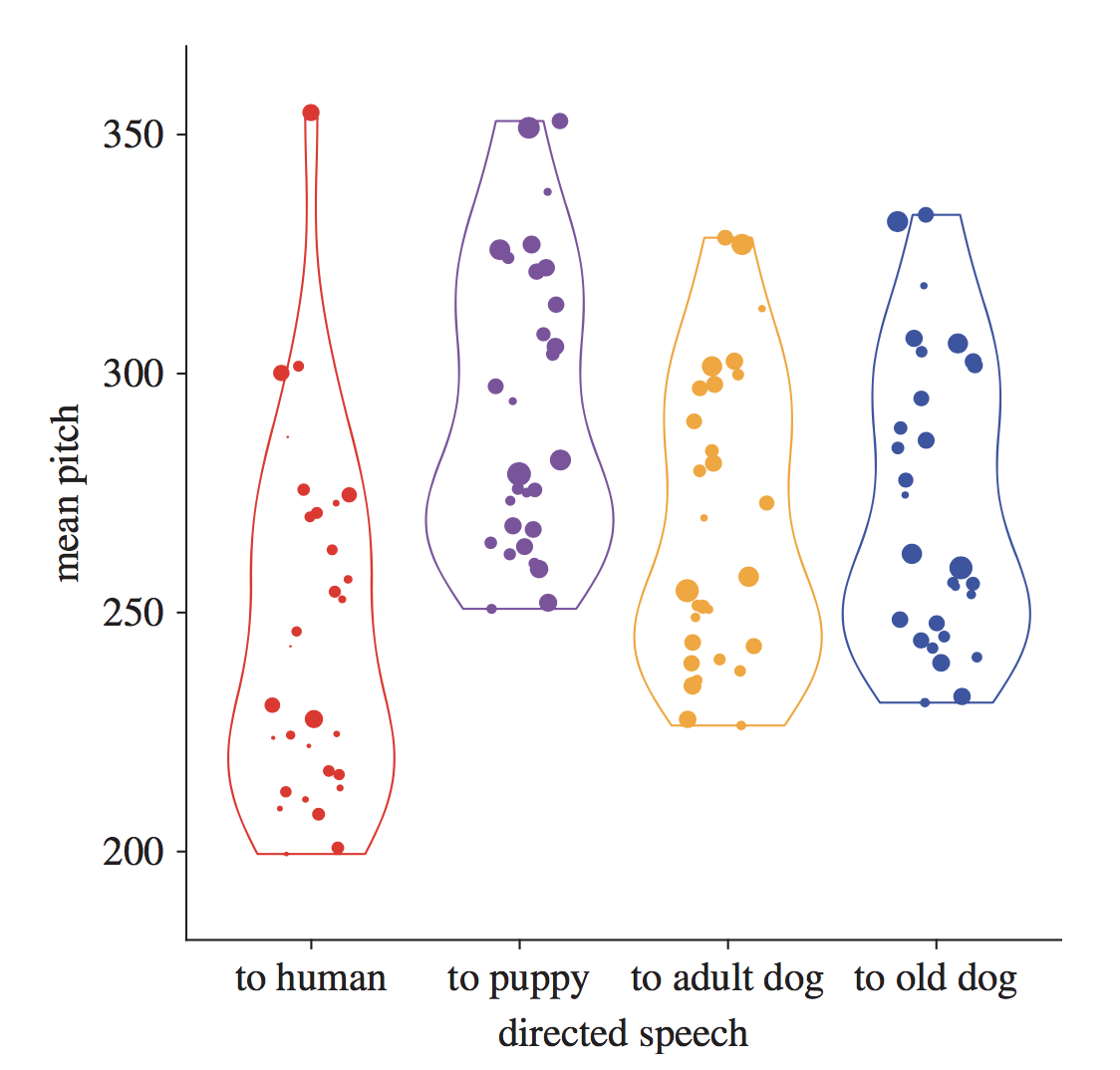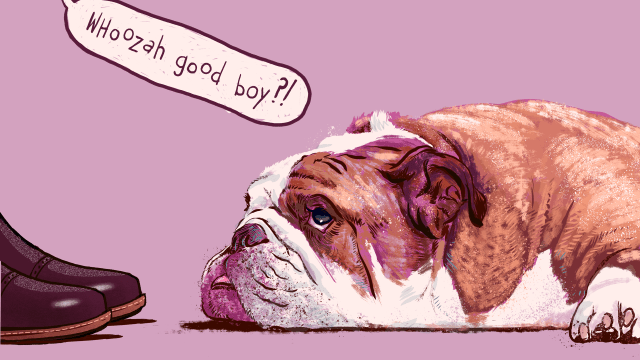You know that thing you do where you talk to your dog like it’s a baby? New research shows that puppies respond well to this silly form of speech, but older dogs couldn’t give a crap. So, stop doing it when your dog grows up.
Illustration by Jim Cooke.
When speaking to actual human babies, adults shift their voice, using more variable pitch, slower tempo and clearer pronunciation of vowels. Known as “infant-directed speech”, this mode of communication is meant to elicit the attention of babies, while promoting language and learning.
Dog owners, for reasons only known to them, often use the same mode of communication when speaking to their canine companions, though this “dog-directed speech” isn’t limited to puppies. Full-grown dogs are frequently subject to a tone of voice normally directed to a group of individuals still confined to their diapers.
Nicolas Mathevon, an acoustic communication specialist at Jean Monnet University in France, recently conducted an experiment to see if infant-directed speech, when directed at dogs, is more effective than “normal” human-directed speech in engaging a dog’s attention and influencing its behaviour, both among puppies and full-grown canines. The results, which have been accepted for publication in the Proceedings of the Royal Society B, show that puppies respond positively to baby talk, but that full-grown and older dogs are decidedly apathetic.

Speech quality plotted by listener and pitch. Our voices get higher when we speak to dogs, regardless of their age. (Image: Mathevon et al., 2017)
For the study, Mathevon recruited volunteers and asked them to look at pictures of dogs of various ages, and then utter common dog-directed phrases such as: “Hi! Hello cutie! Who’s a good boy? Come here! Good boy! Yes! Come here sweetie pie! What a good boy!” and so on. Mathevon analysed the quality of the recorded speech to discern patterns, and to distinguish dog-directed speech (which is practically the same as infant-directed speech) from normal human speech.
Over the course of two experiments, these recordings were played back to dogs of various ages and breeds. Over 40 dogs were used in the study, including puppies ranging in age from two to eight months. The recordings were played back through a high-end speaker to ensure a faithful reproduction of the human voice. Mathevon didn’t have humans interact directly with the dogs, as that would have introduced too many confounding variables (such as physical gestures, variations in the way people look and smell, differences in affection and so on).

The experiment went a little bit like this. (Image: “His Master’s Voice” by Francis Barraud, 1895)
Mathevon found that humans used dog-directed speech when addressing dogs of all ages, and that the quality of the speech was consistent across the ages, except for pitch, which was a smidge higher when communicating with puppies. The puppies reacted strongly to the dog-directed speech, responding quickly, gazing more often at the loudspeaker and moving close to it. As for the normal speech sequences, the puppies practically ignored them.
Full-grown and old dogs didn’t react any differently to dog-directed speech compared to normal speech, and they largely ignored the words coming out of the speaker.
Mathevon says there’s a reason why humans shift their speech patterns when talking to dogs, and it’s not just because we find dogs adorable. “I think that we are directing a human behaviour at dogs,” he told Gizmodo. “Our study suggests that we use this kind of speech pattern to engage interaction with a non-speaking listener.” In other words, we employ this type of speech when talking to listeners who can’t talk back (and not just babies), or listeners who have difficulty reciprocating conversation (infant-directed speech sometimes happens when we talk to the elderly). “This study does not tell much about dogs, but more about our human behaviour,” he added.
“It underlines that we try to adapt the way we speak to our listener — or to what we think our listener is able to understand,” Mathevon continued. “In the case of human babies, the use of ‘infant-directed speech’ is efficient in engaging the attention of the baby, and may promote language learning. Pet-directed speech is thus probably used to engage interaction with a non-speaking listener.”
Looking ahead, Mathevon would like to investigate the acoustic features of dog-directed speech to understand why puppies are so responsive to it. He’d also like to see if cat owners also use pet-directed speech, and if cats respond to it.
As cat owners will attest, the answer to the latter question is almost certainly “no”. But hey, science has been known to surprise us before.
